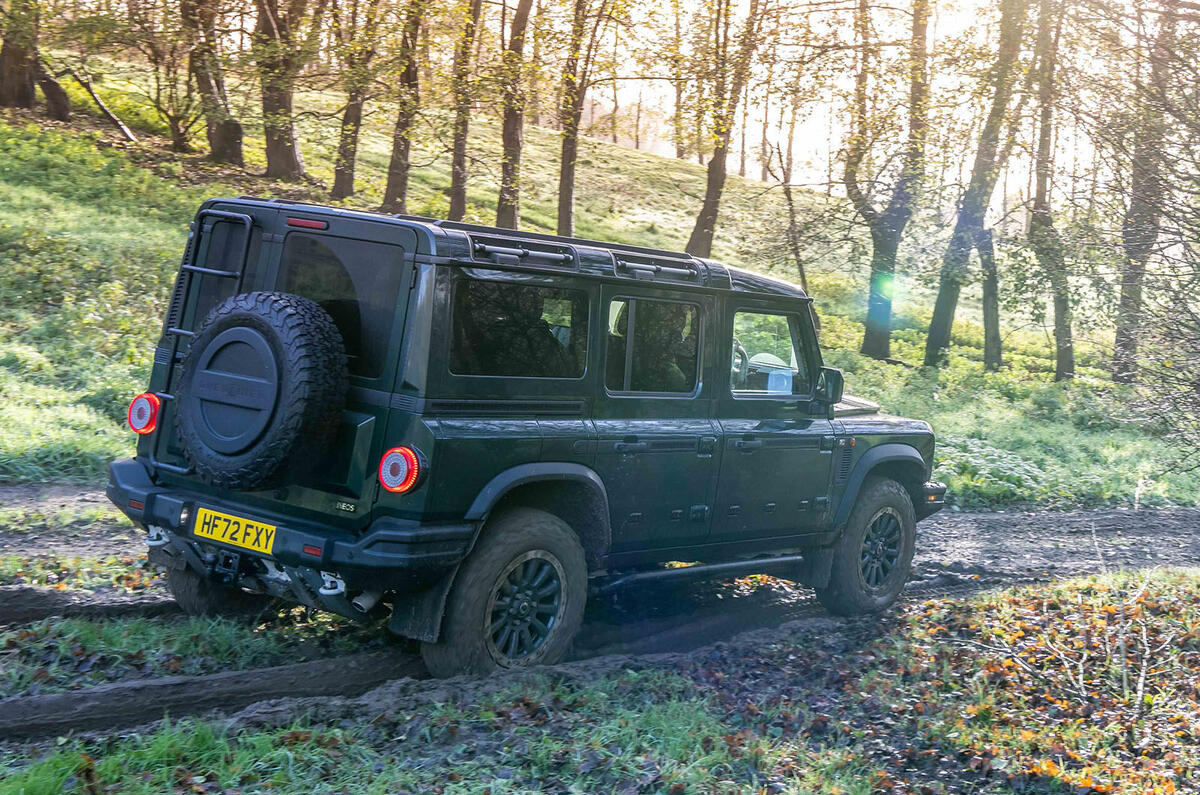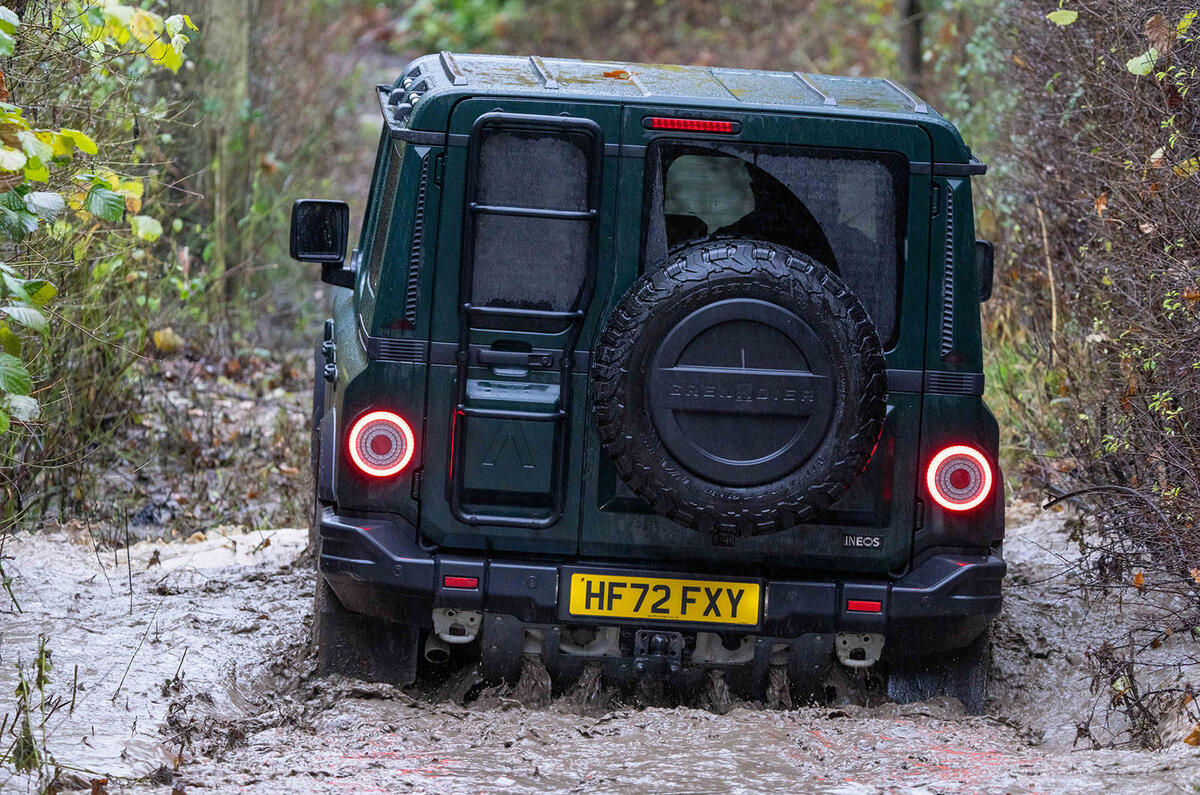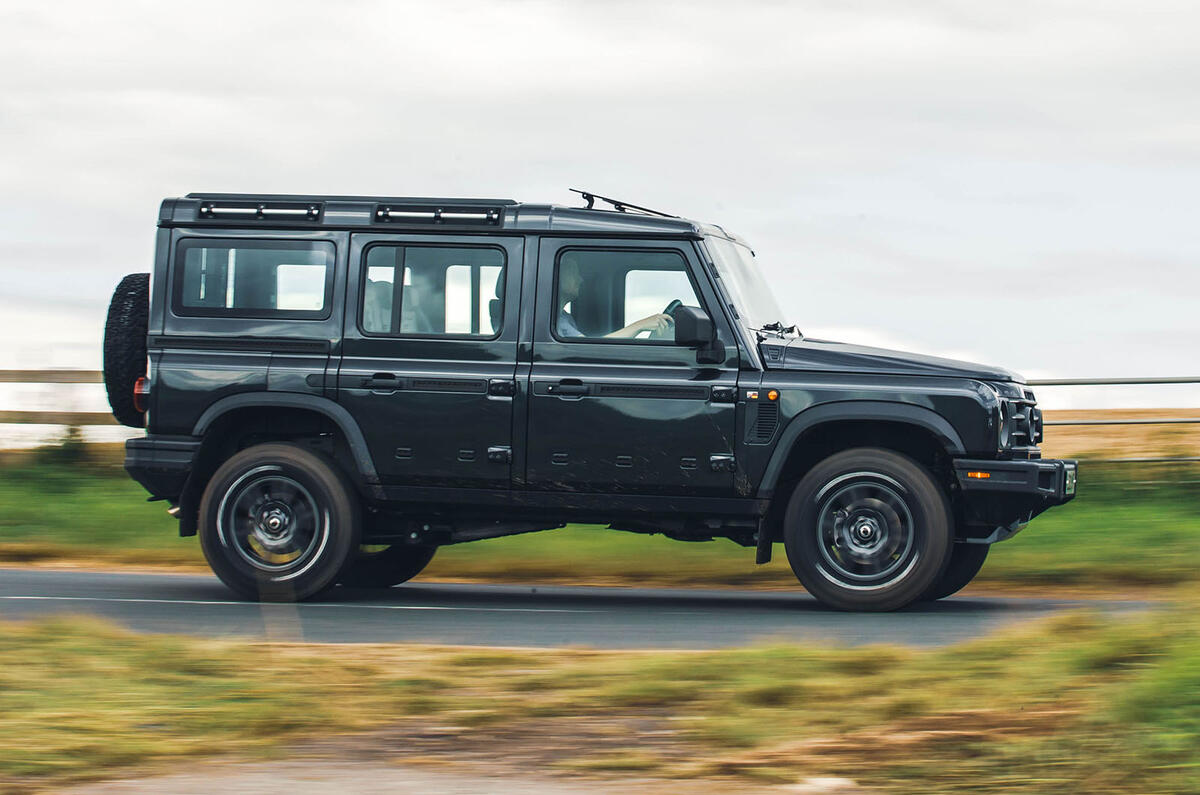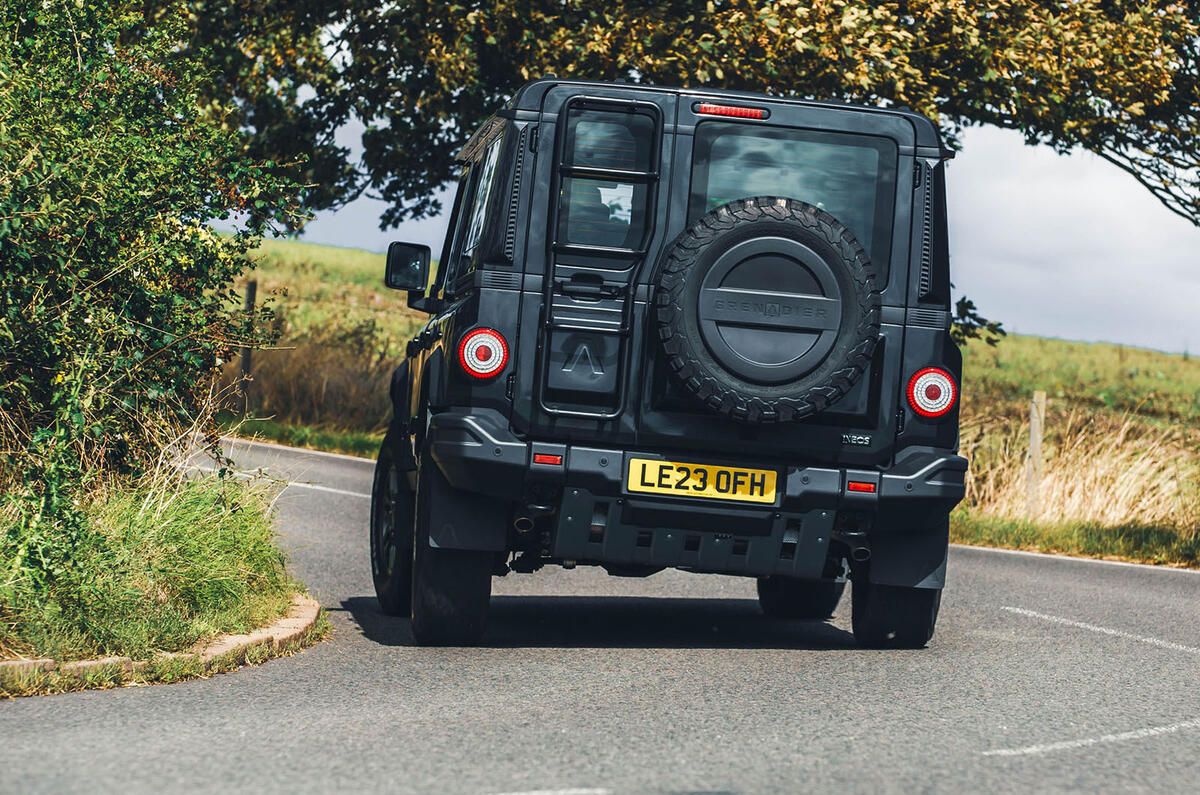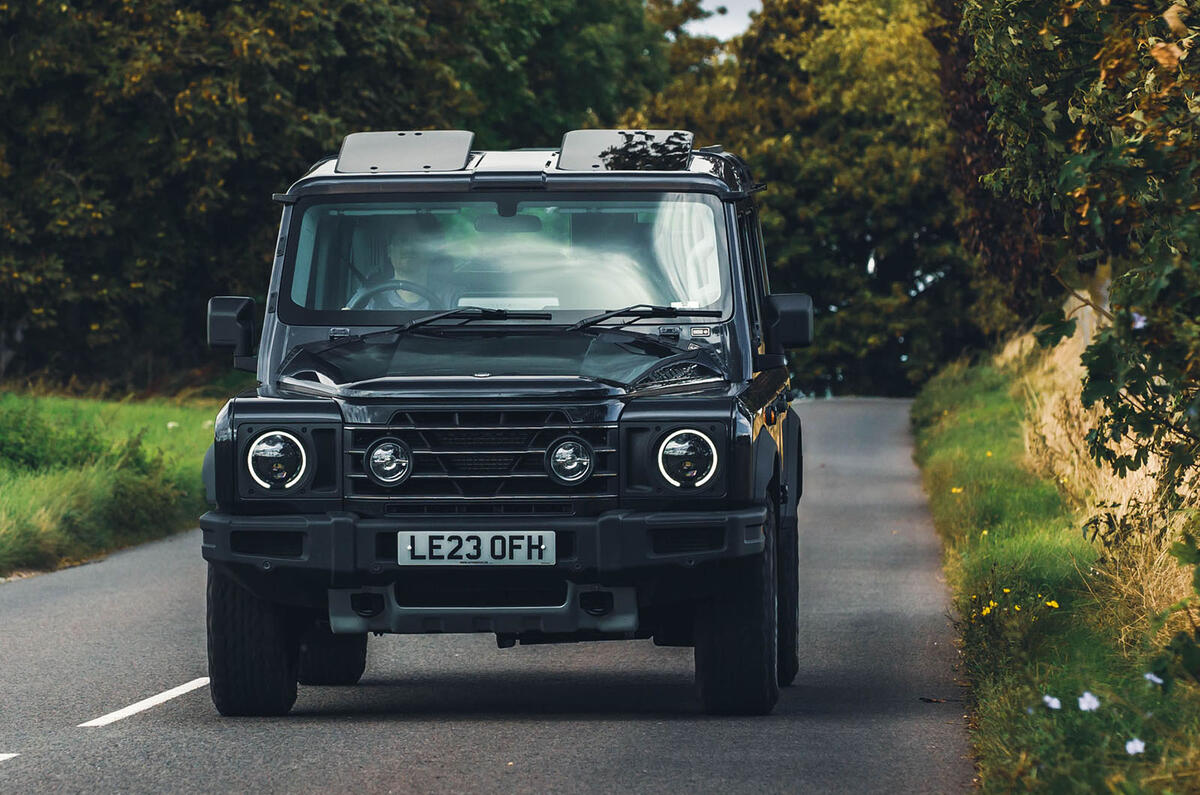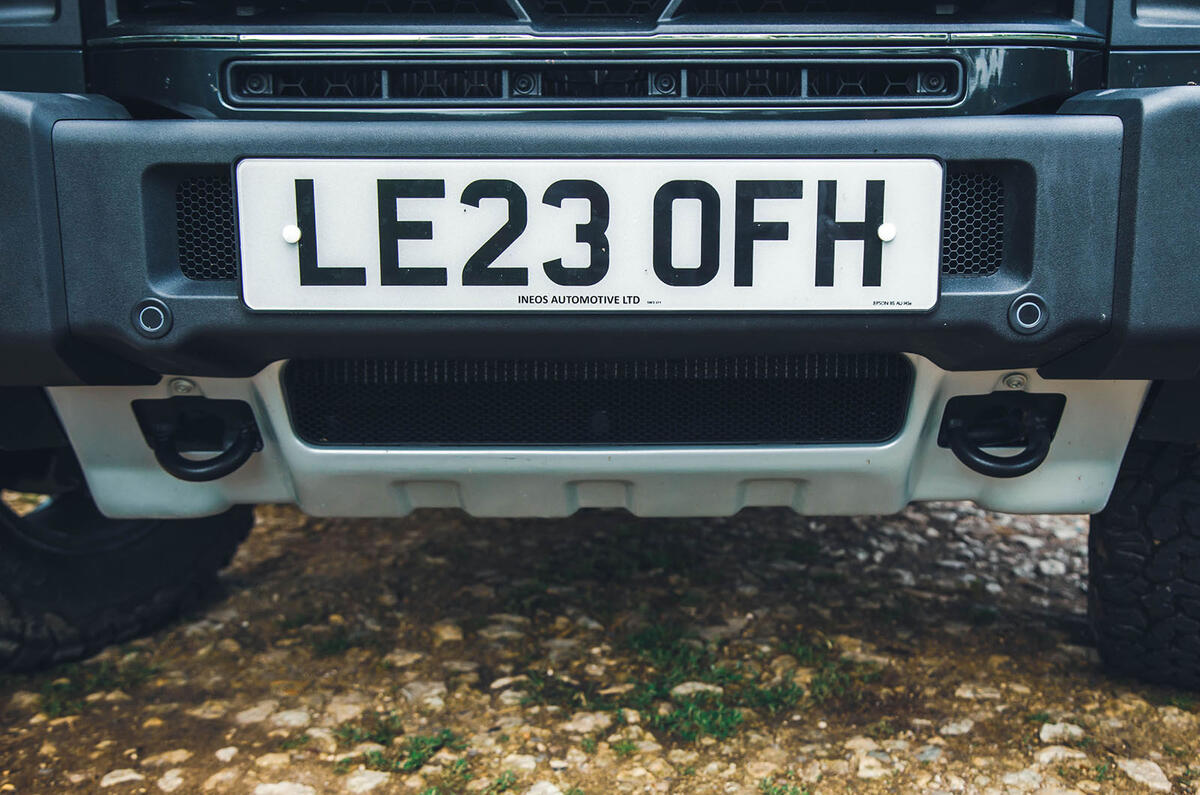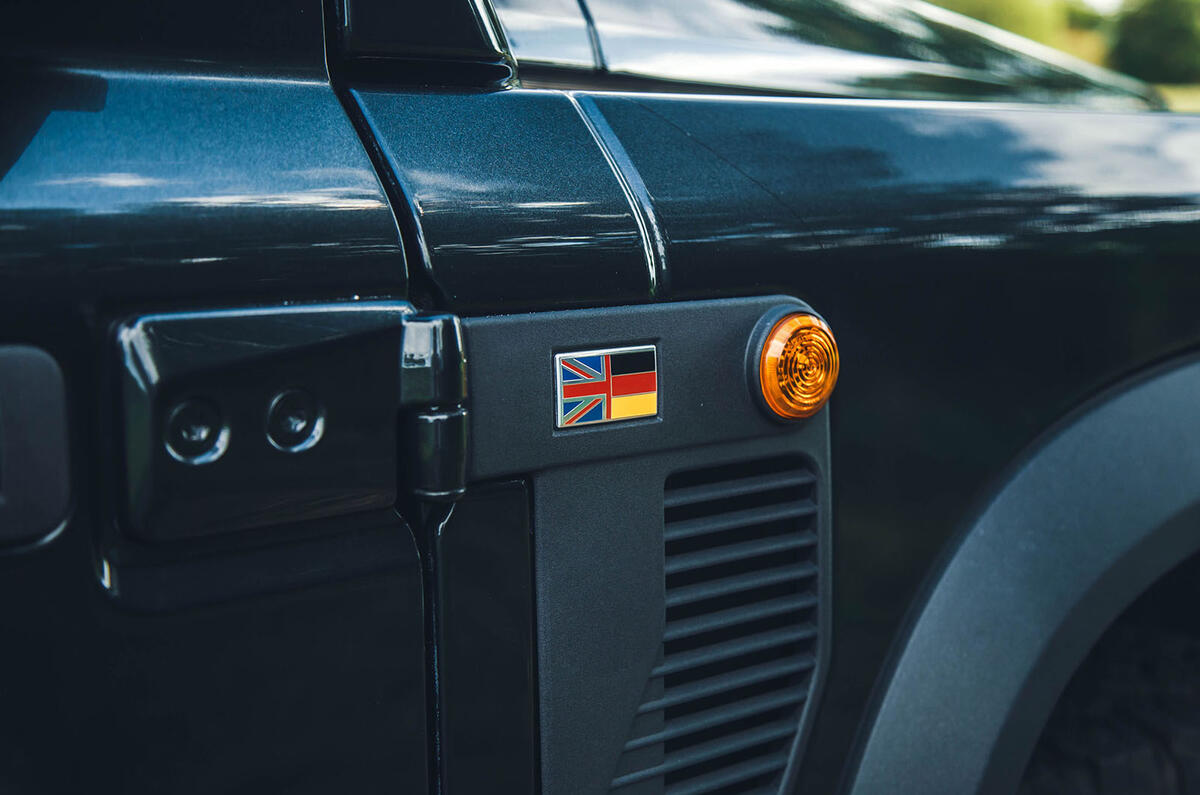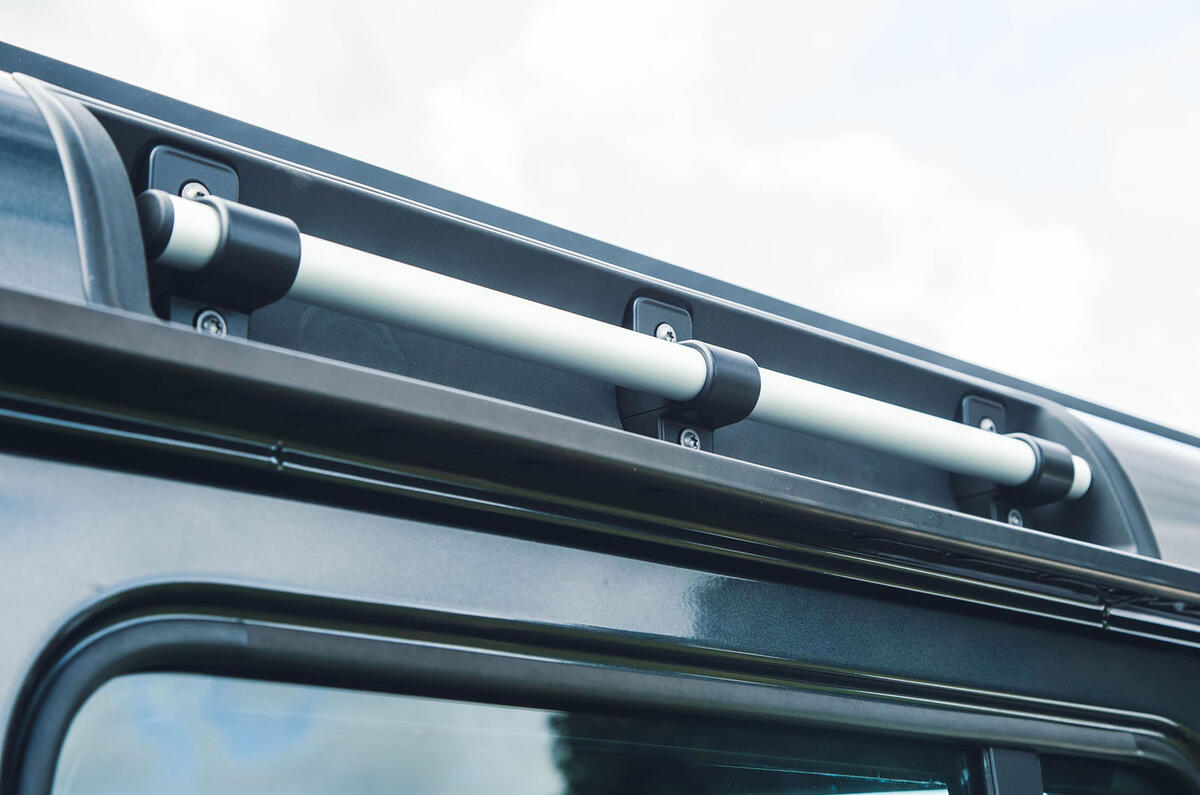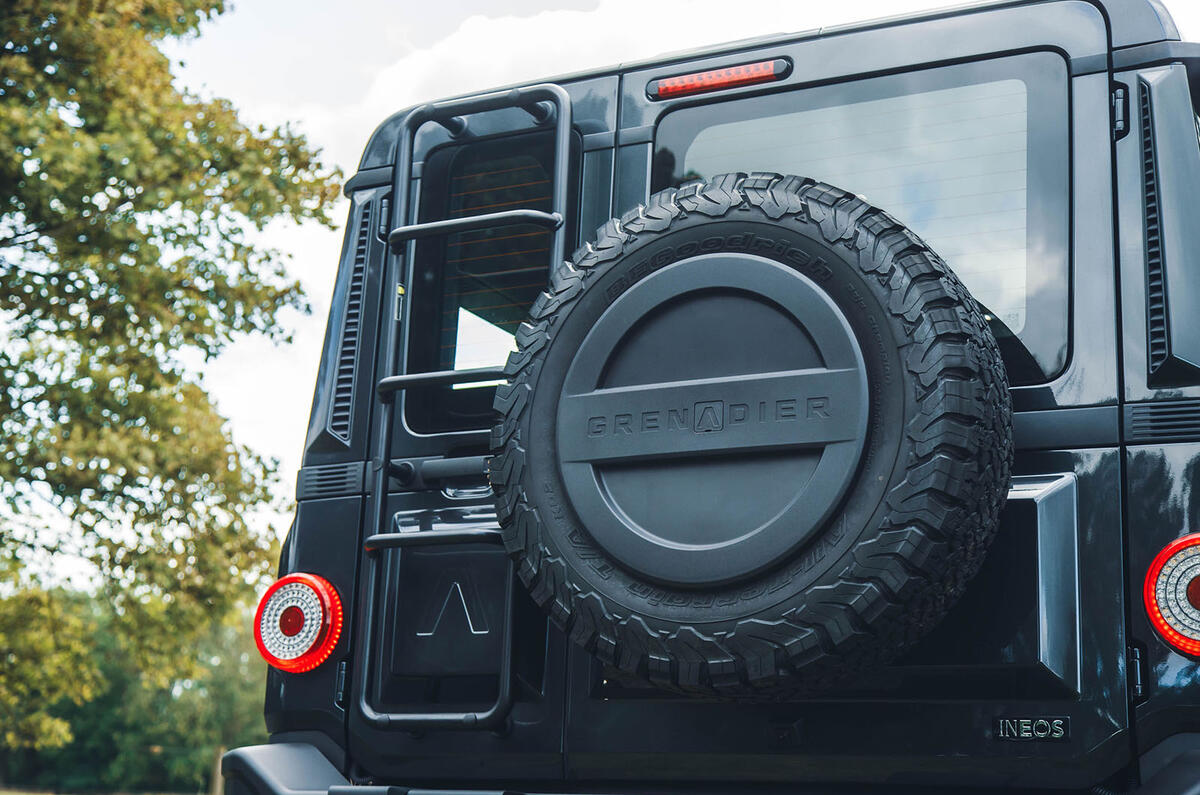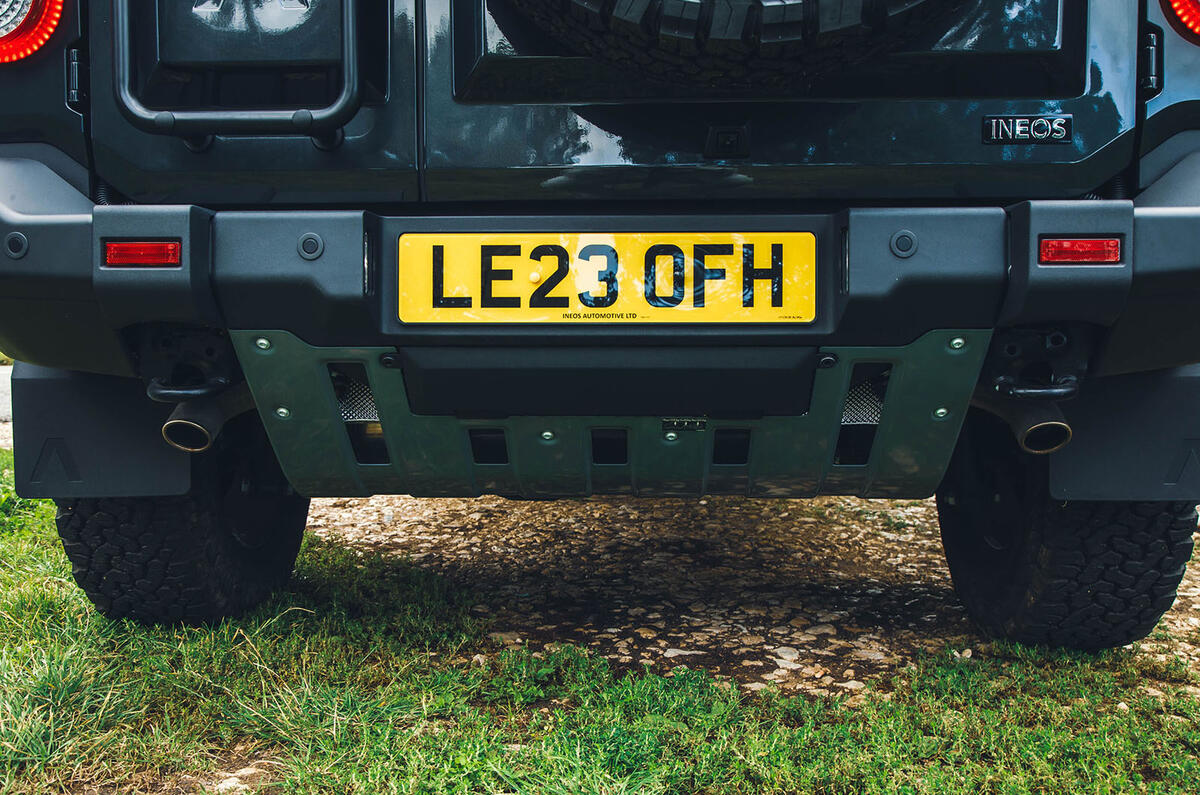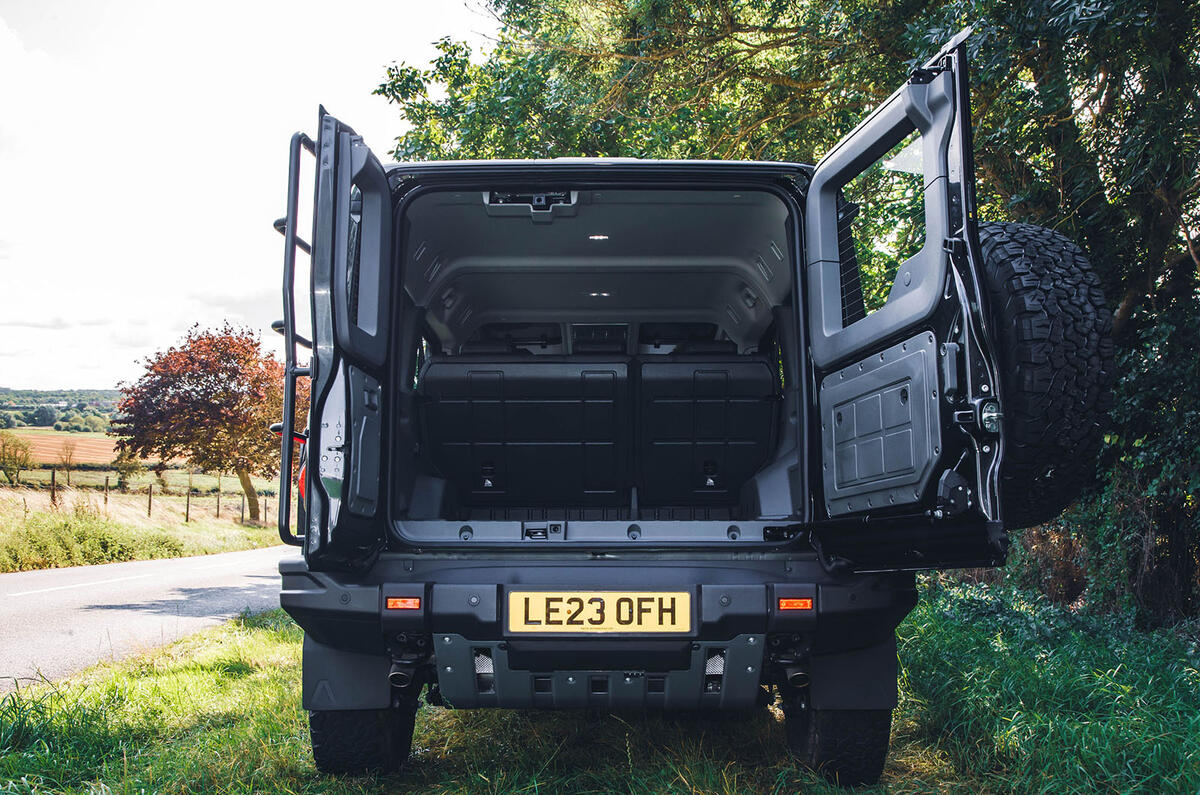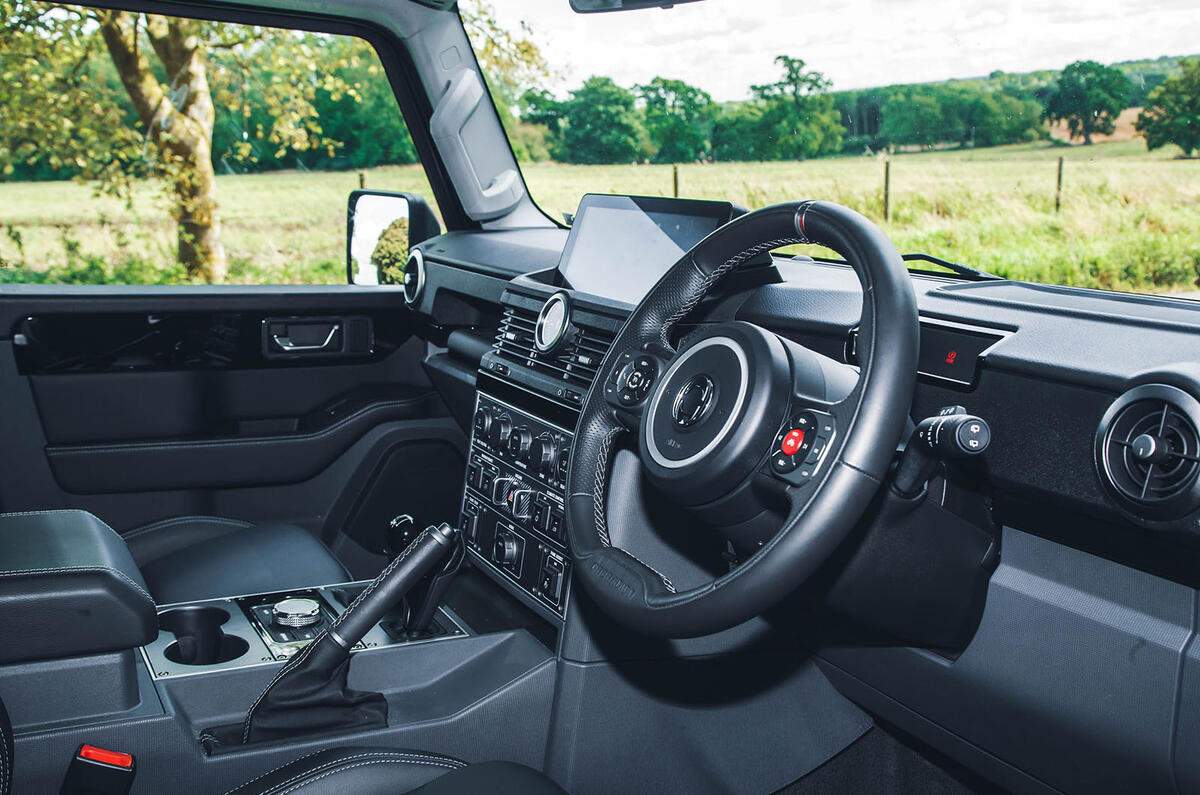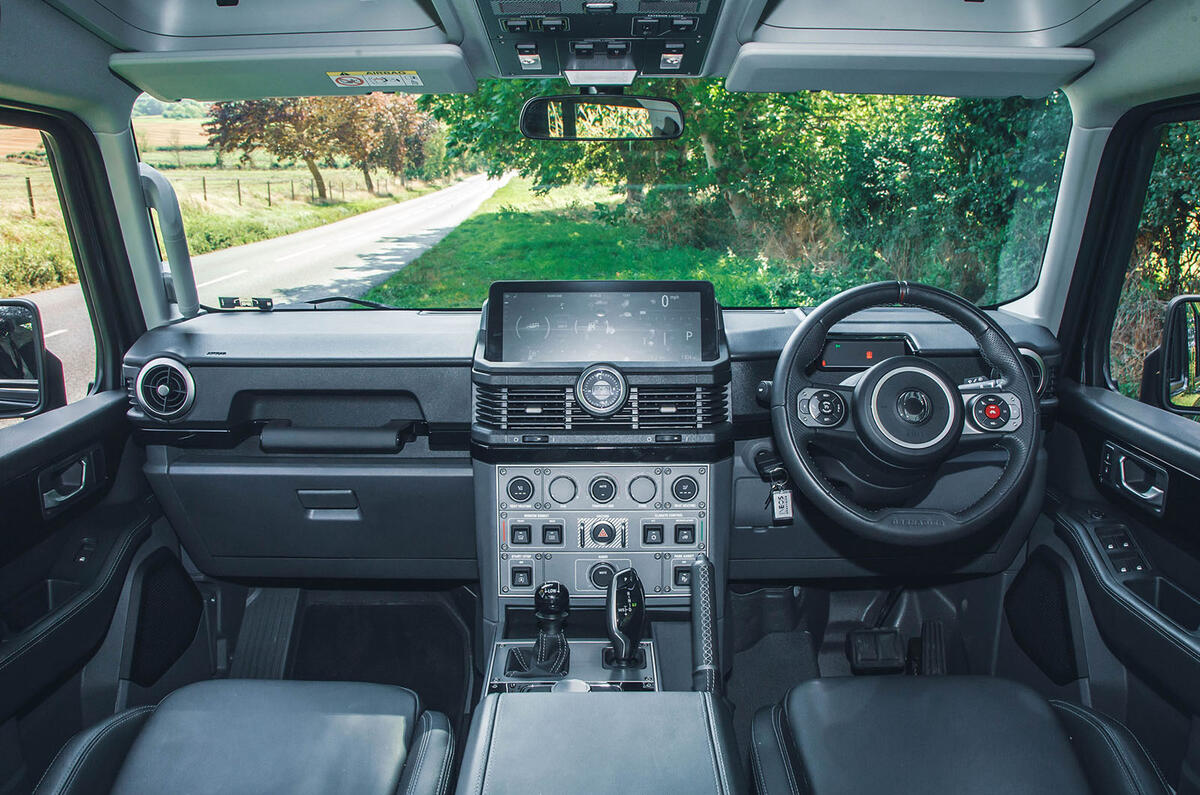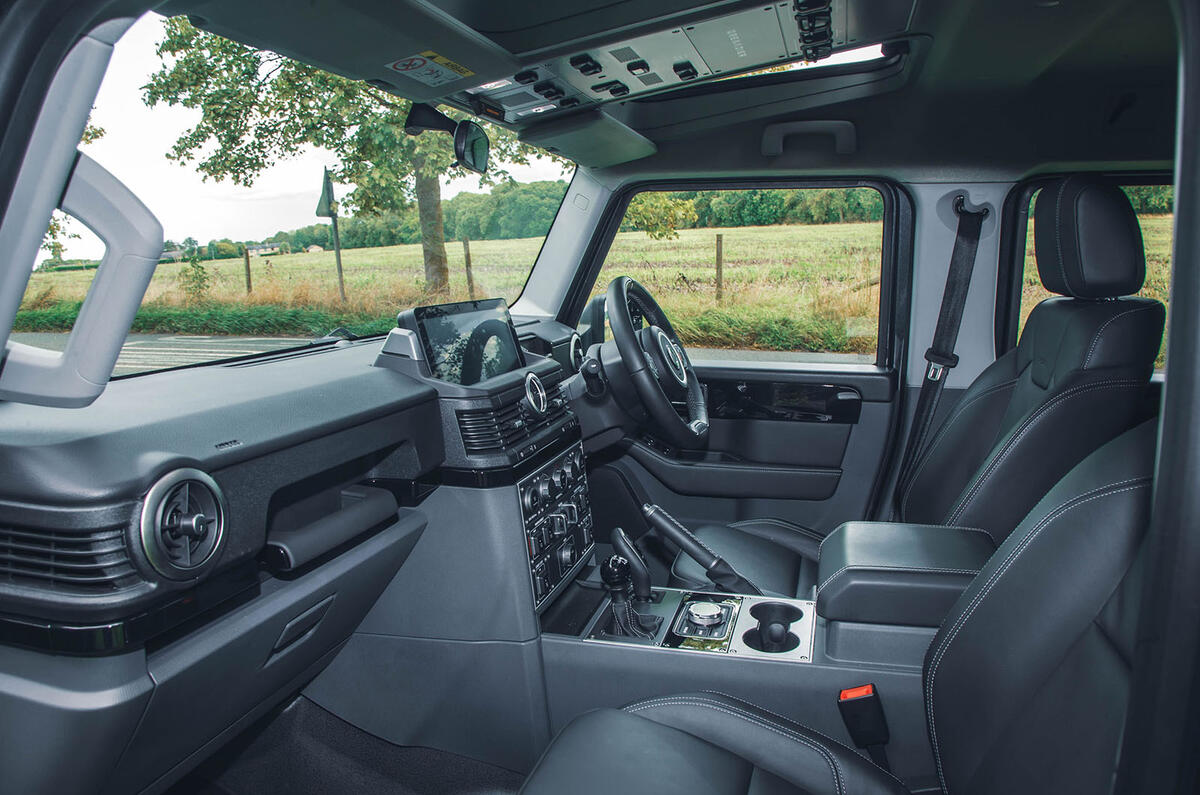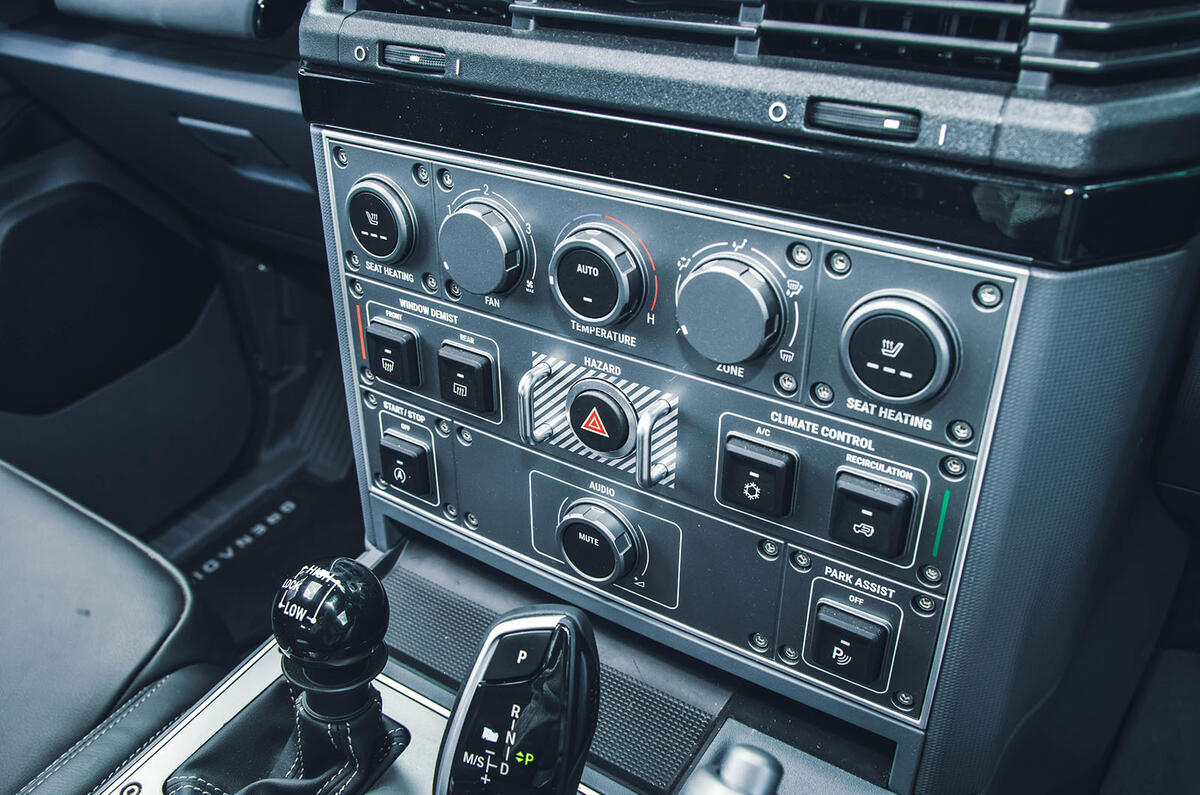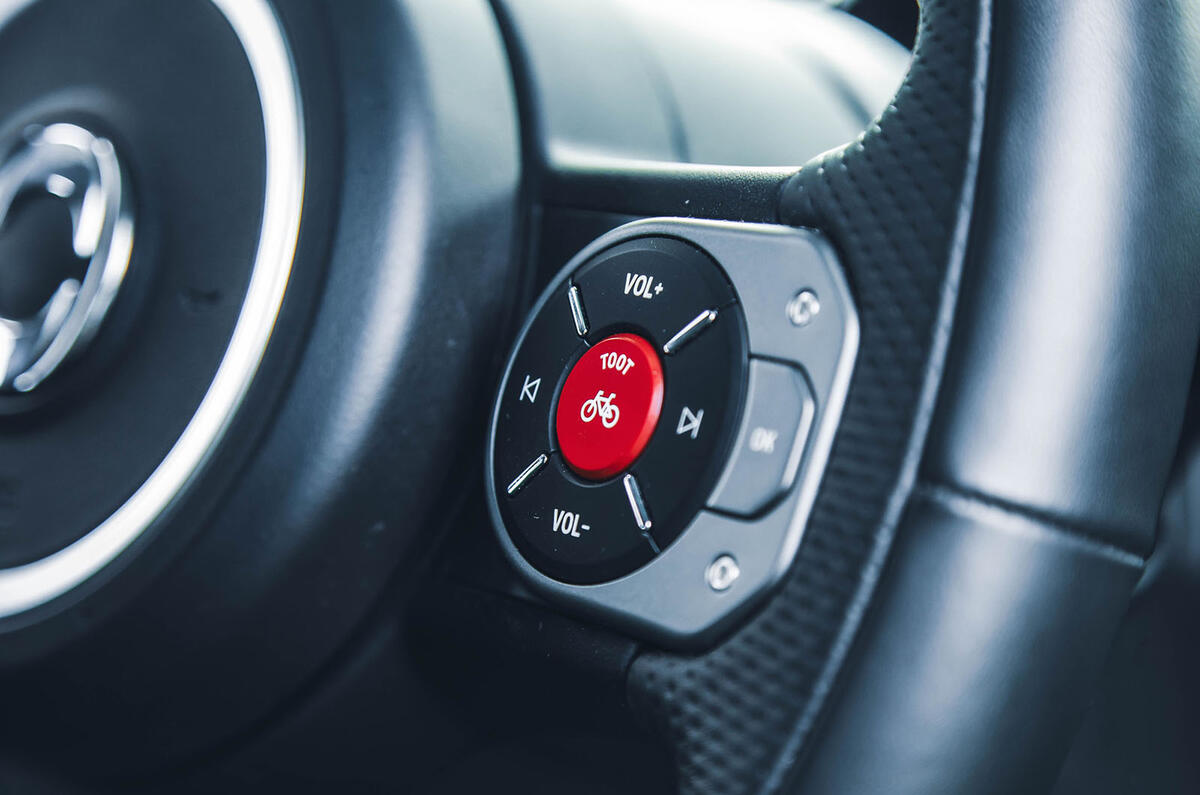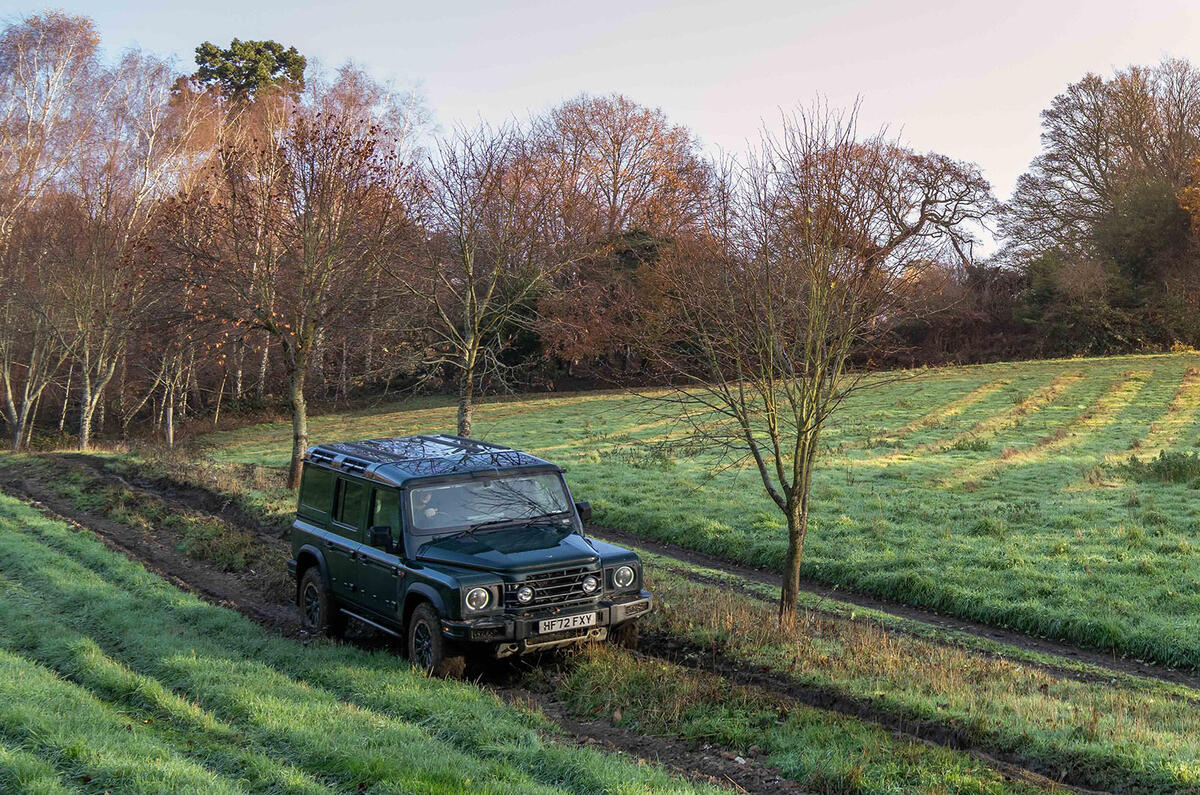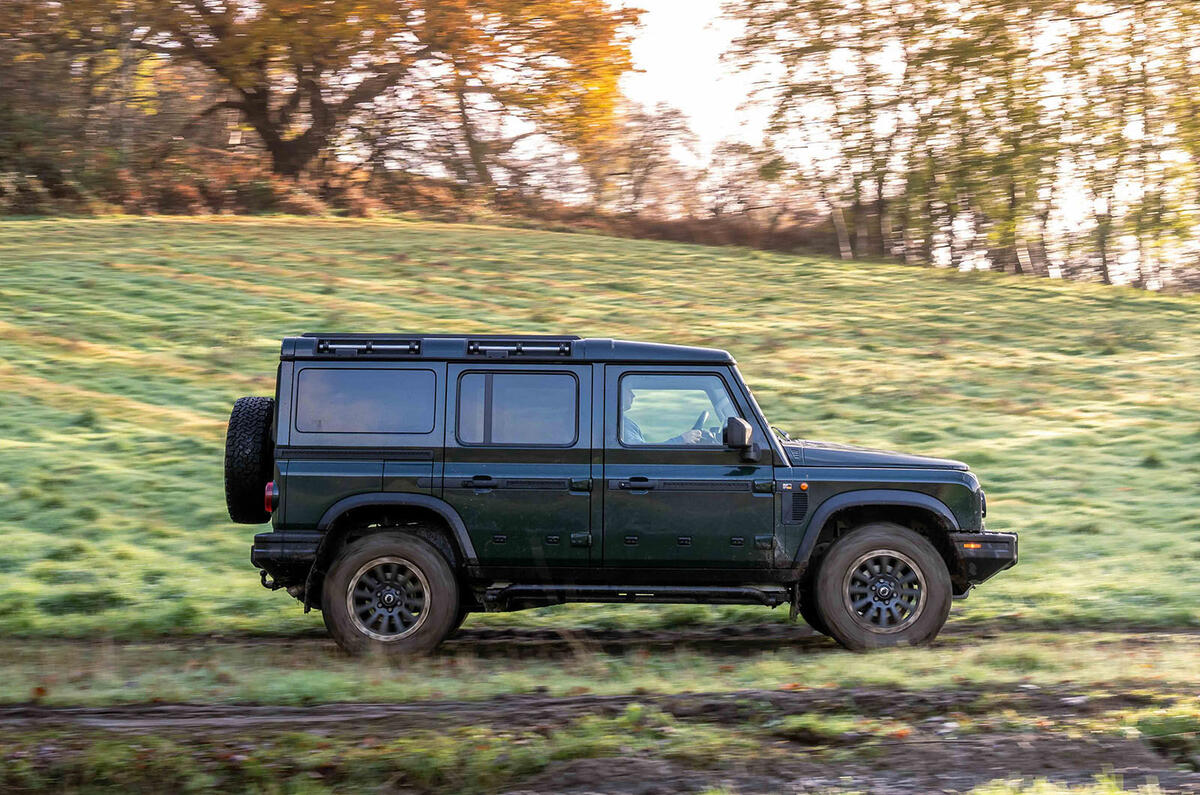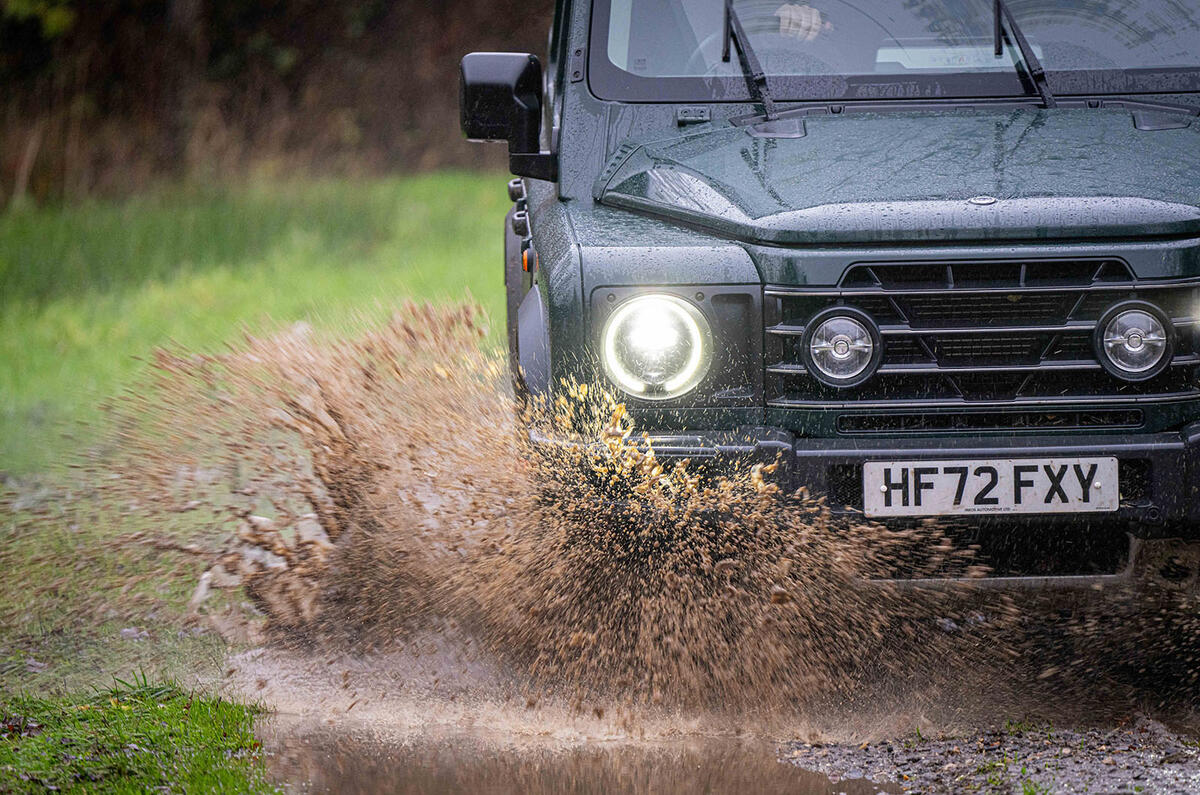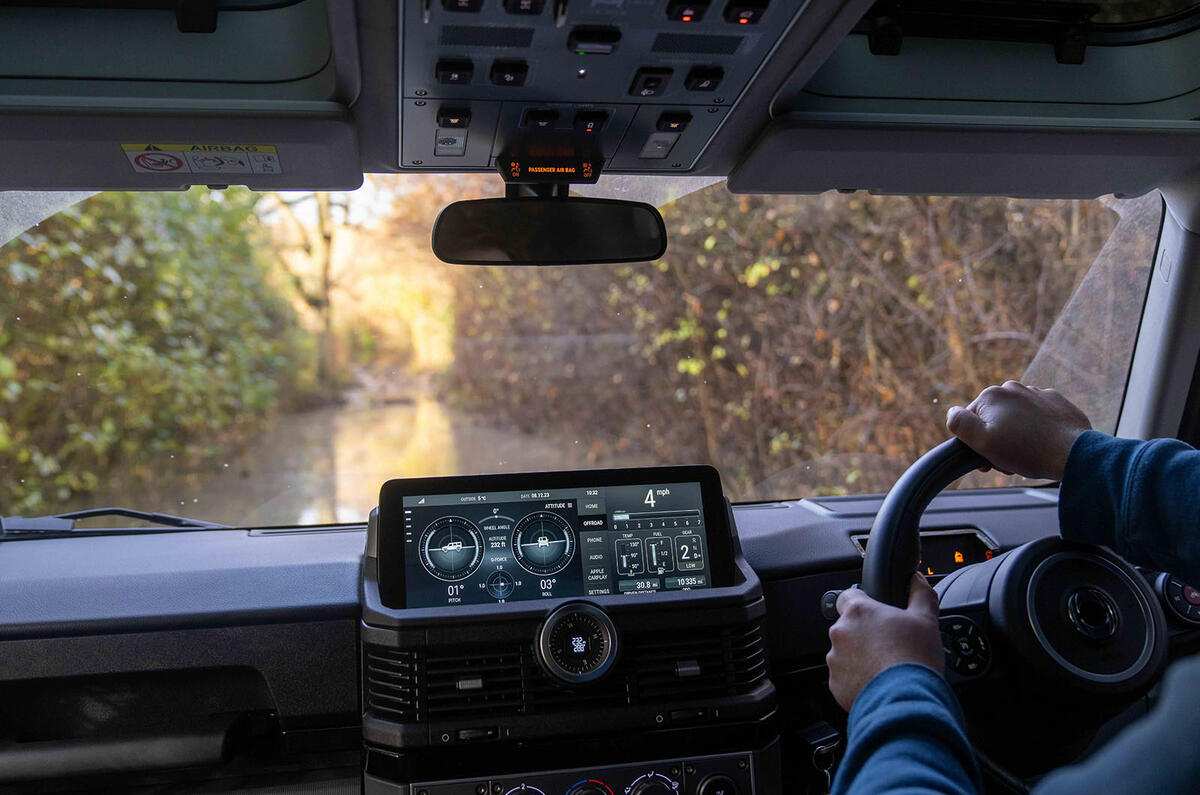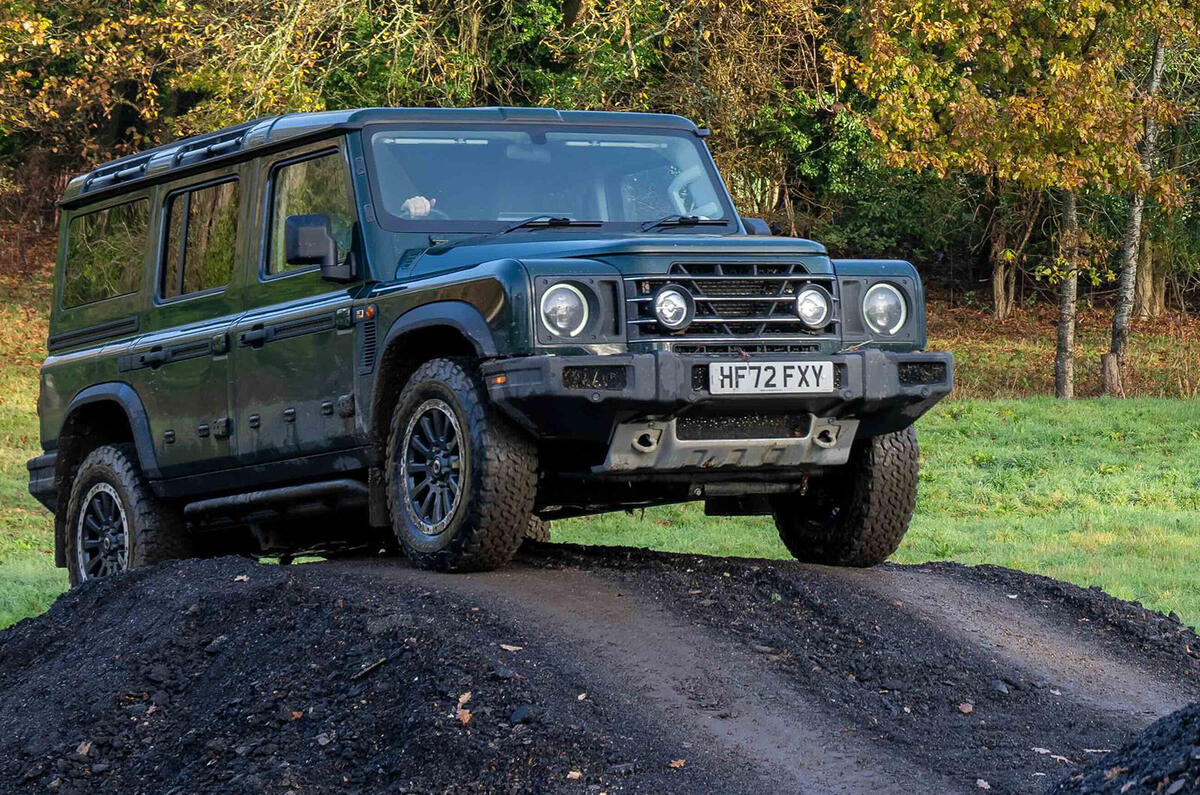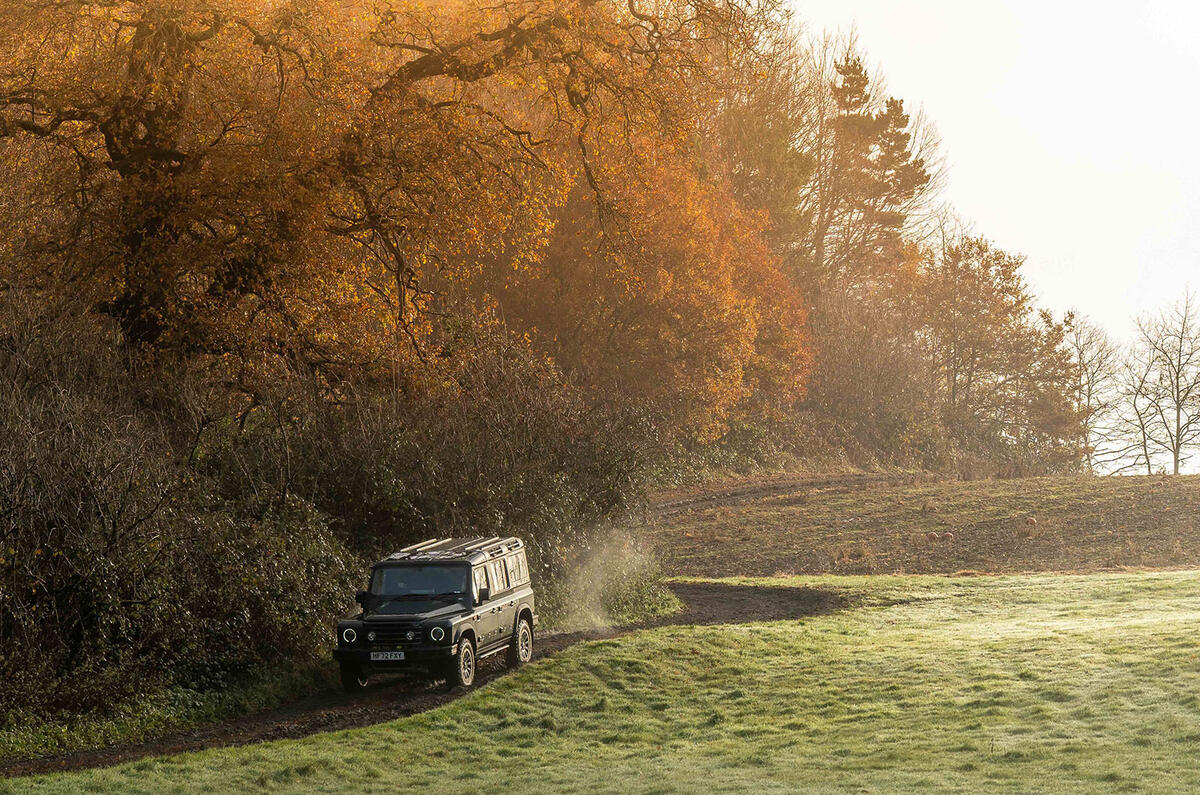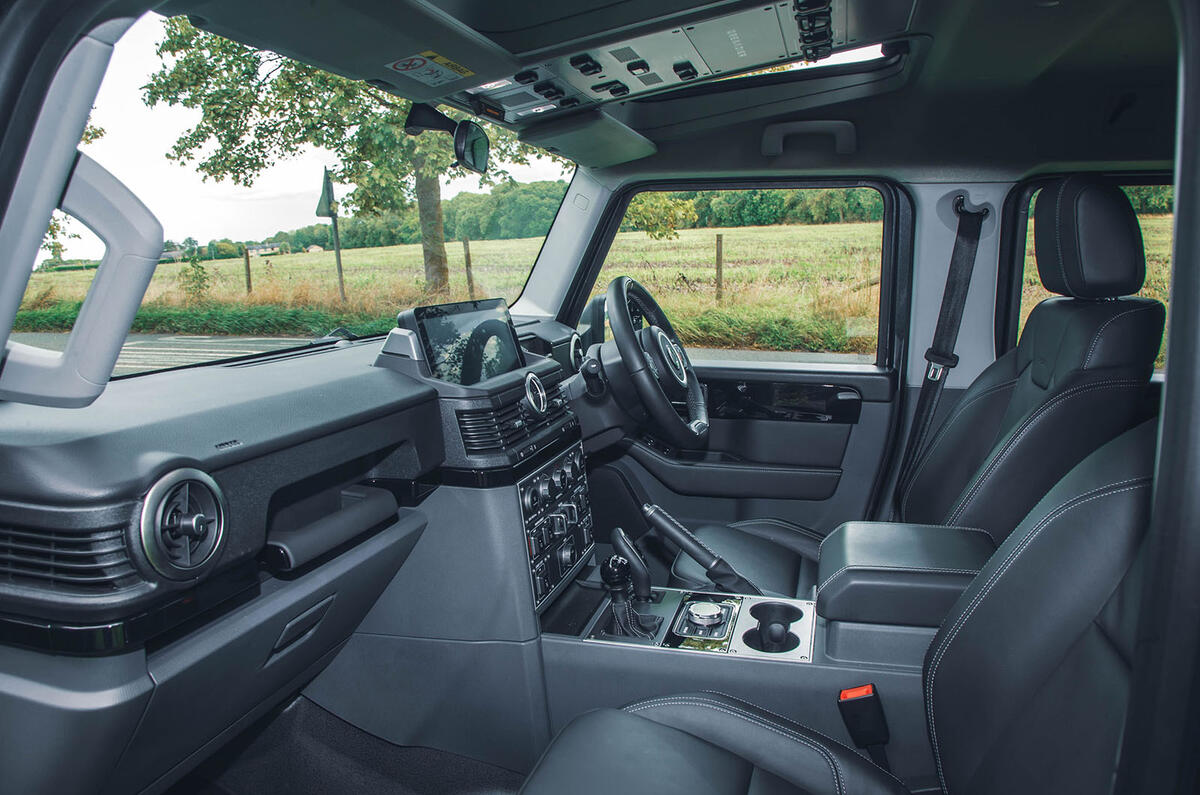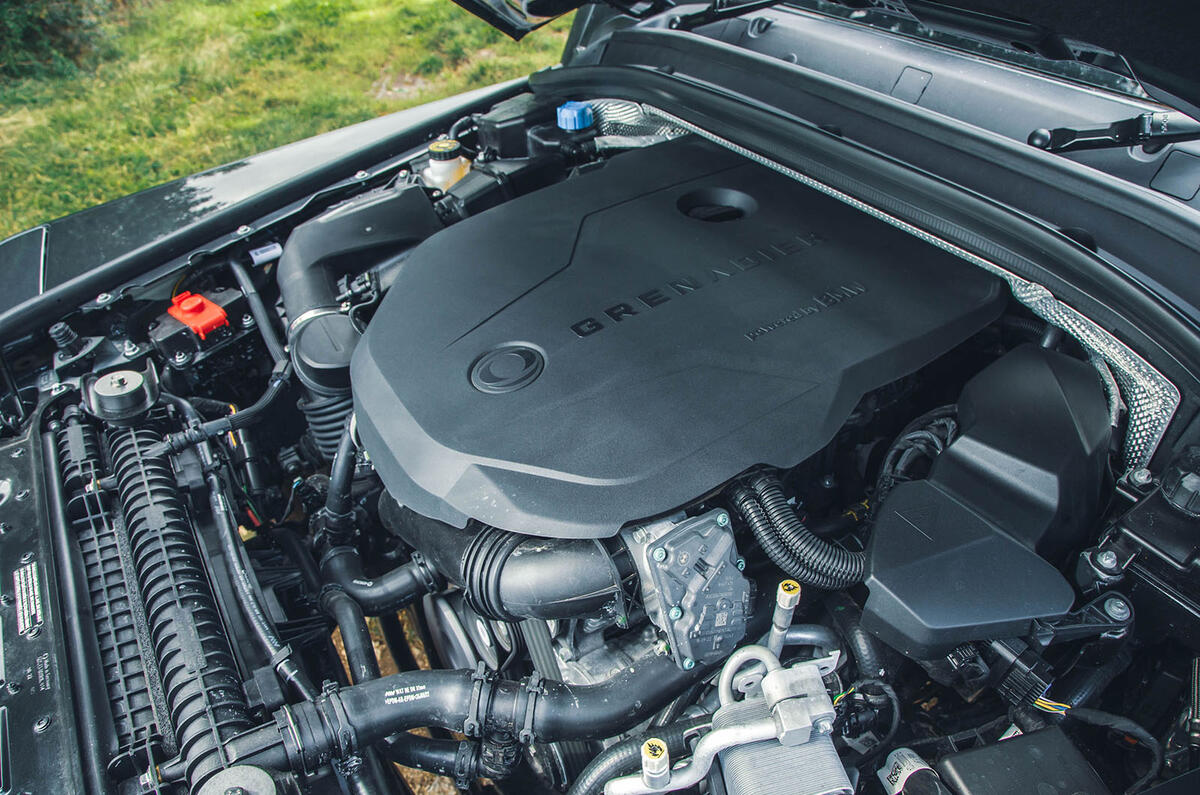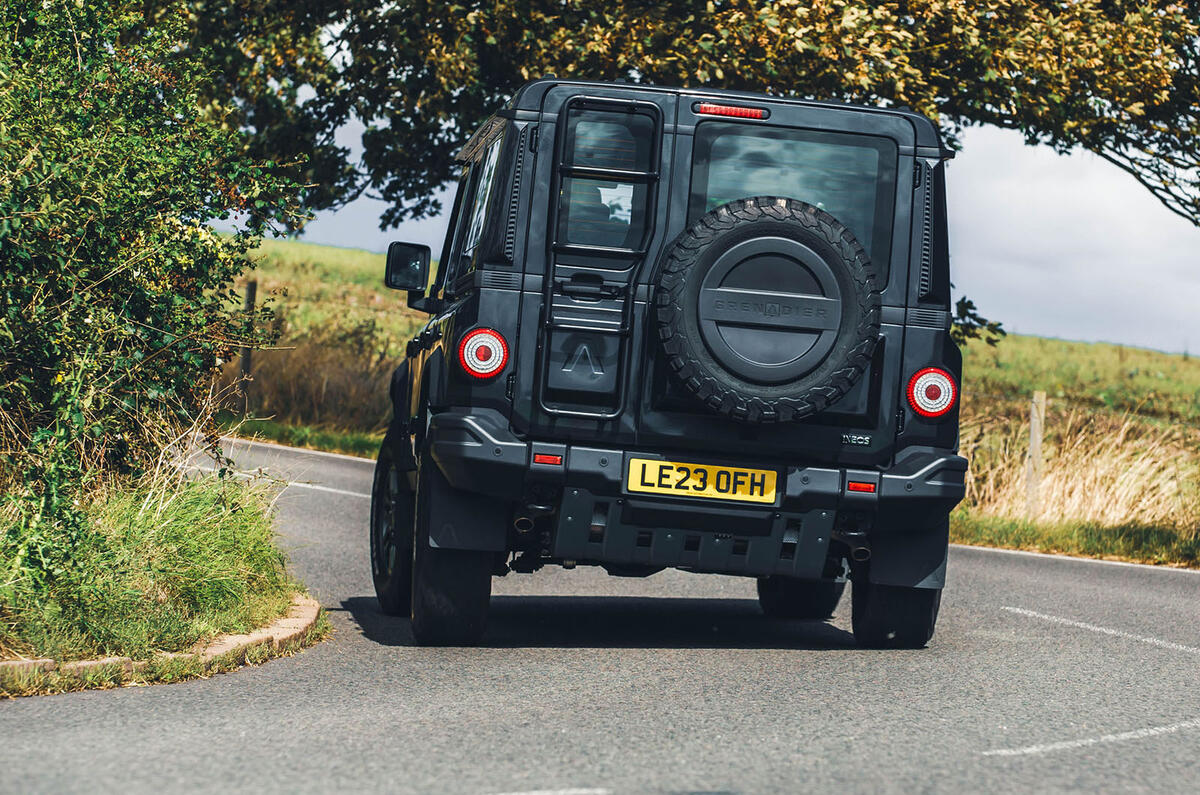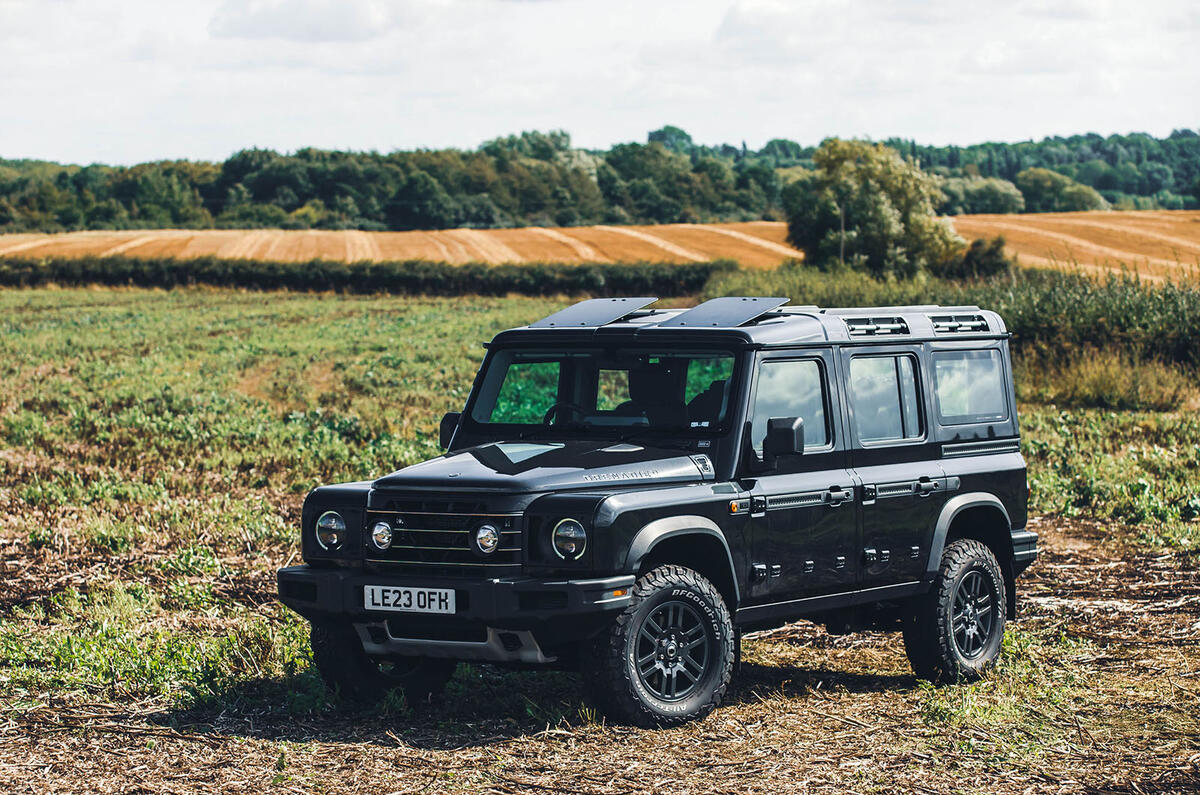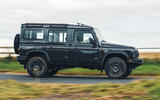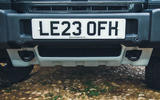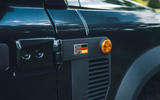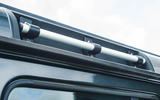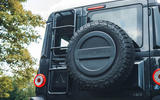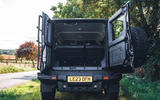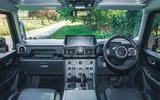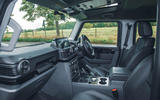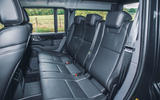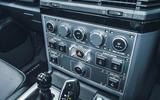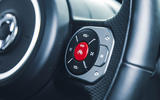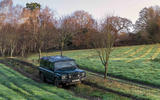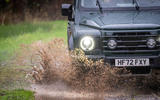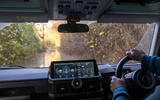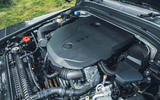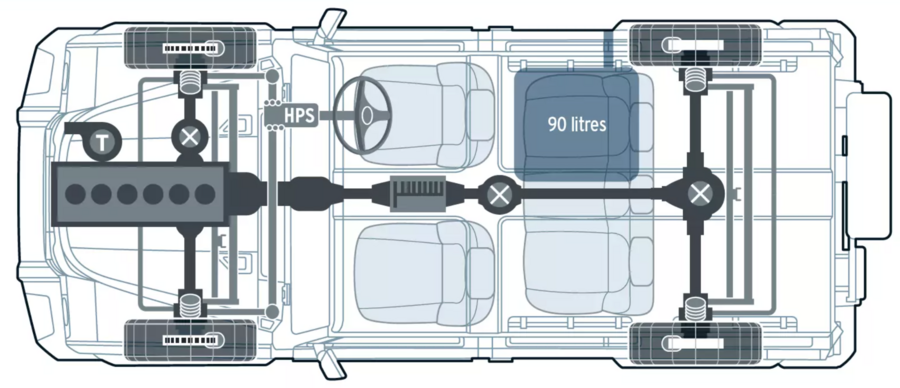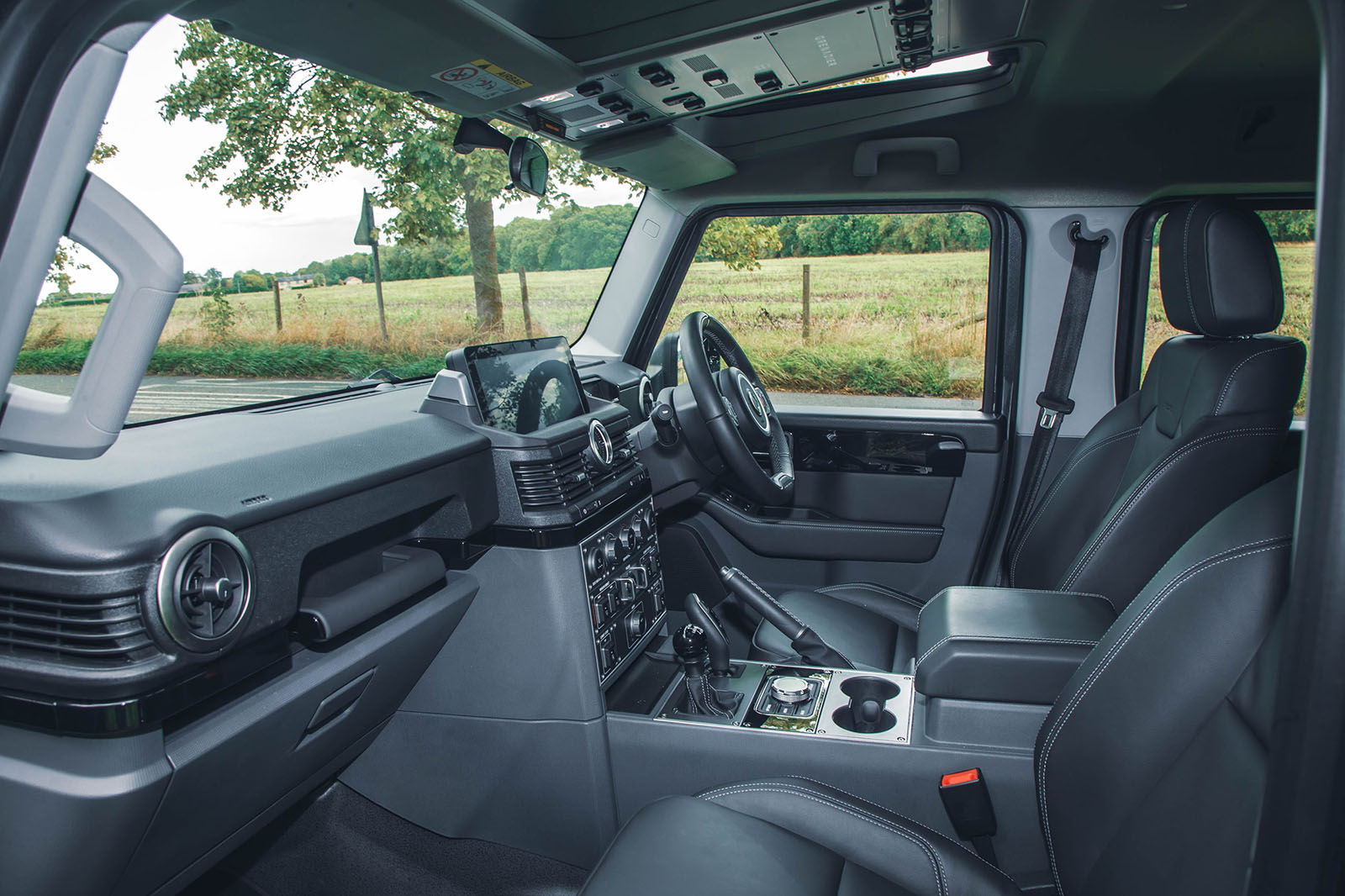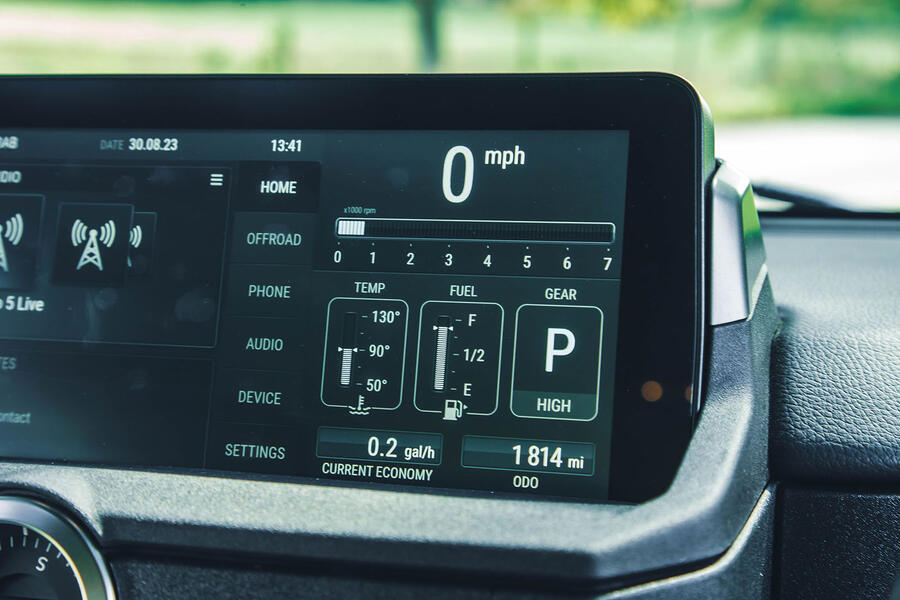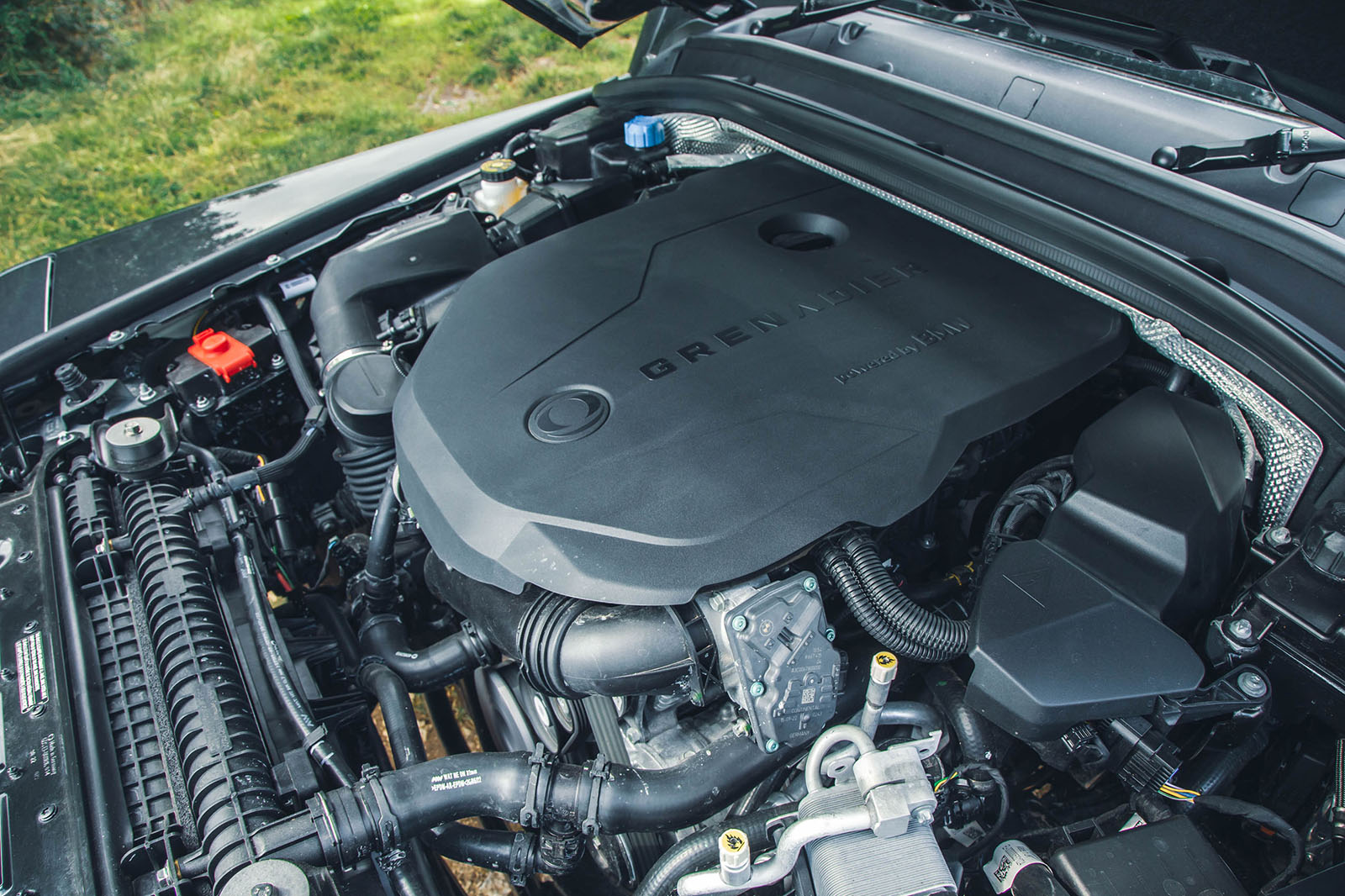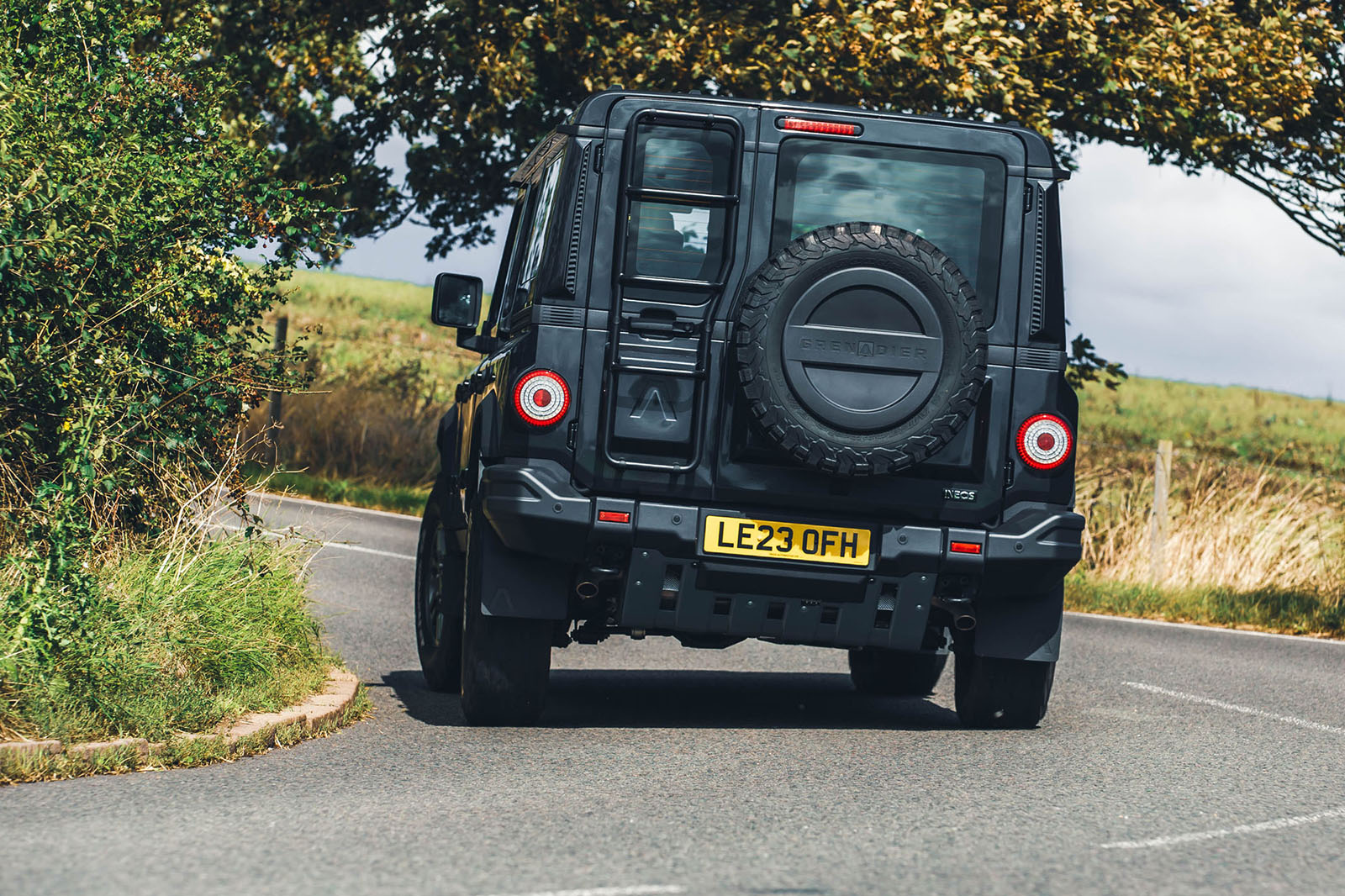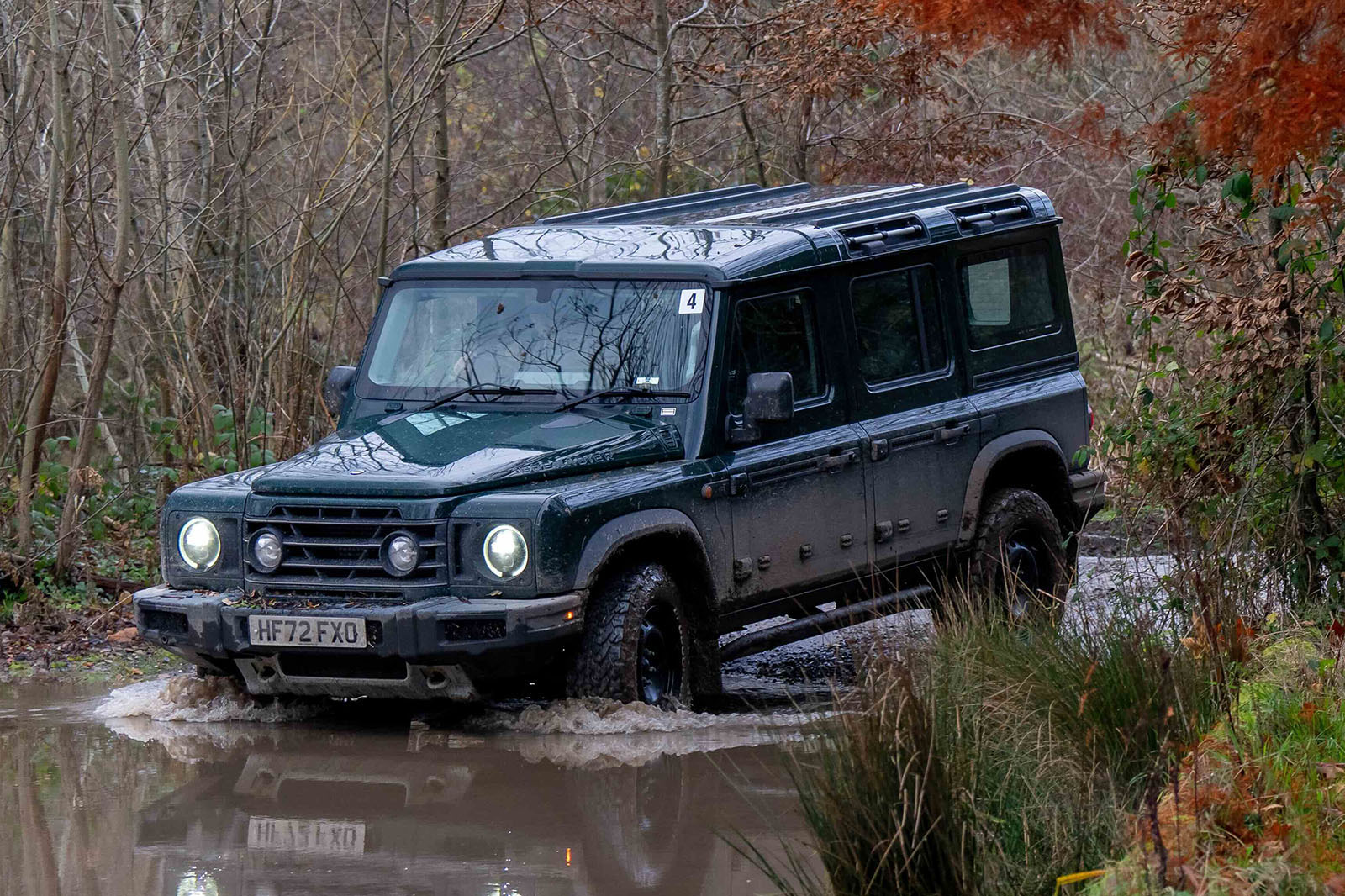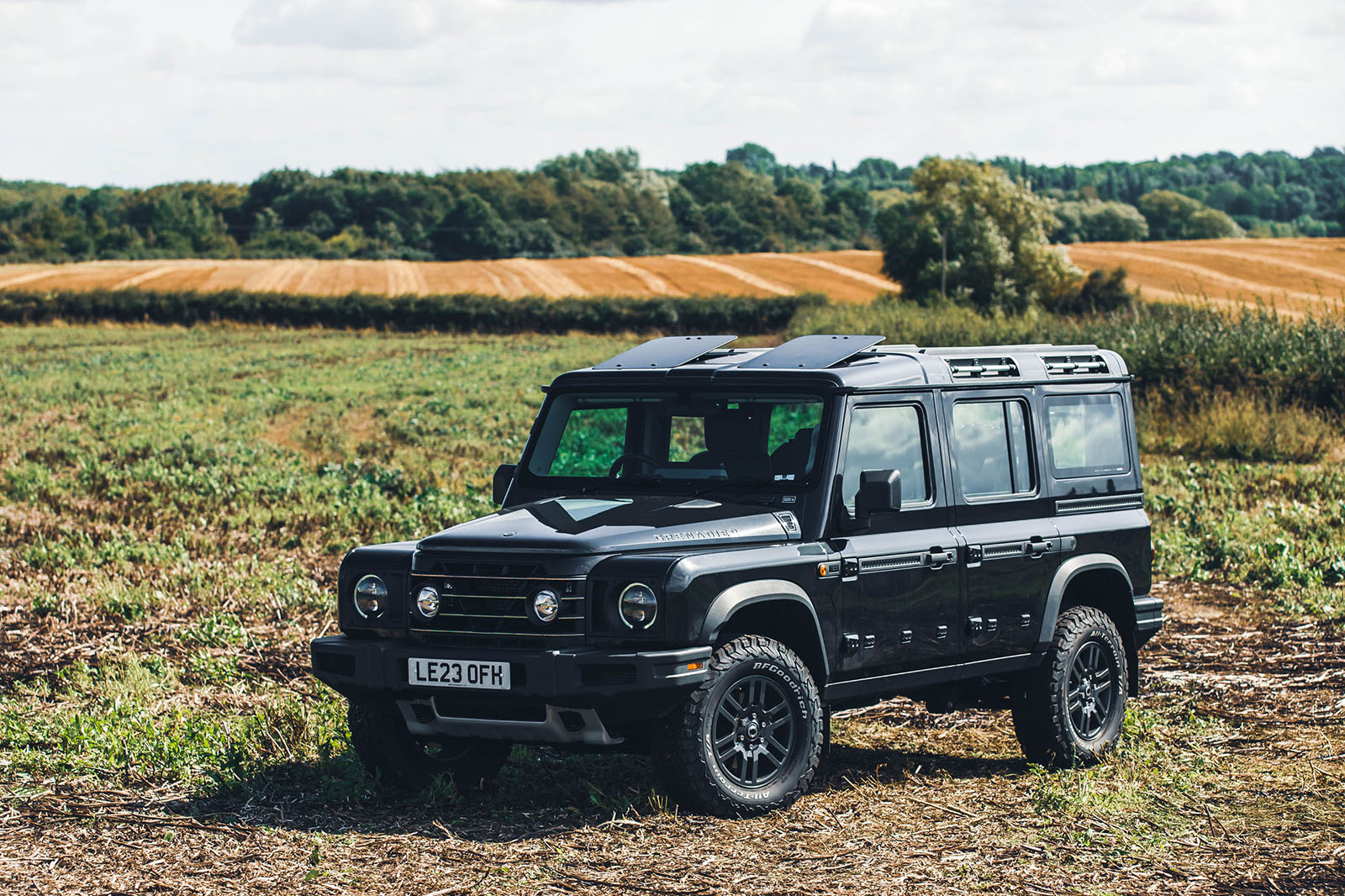For reasons we will come to, you are unlikely to deploy the Grenadier’s full firepower often. However, do so and it’s unexpectedly brisk. Top speed is 99mph but our petrol test car took just 8.0sec to stomp its way to 60mph, in much the style of Joe Marler 10 metres out.
The 30-70mph dash in kickdown takes a more leisurely 8.1sec but a mid-ranking Range Rover isn’t much quicker.
This powertrain isn’t lacking in character, either. Likeably gruff on start-up, BMW’s straight six is well mannered when unprovoked but has a rich blare when extended.
It would be mostly unrecognisable to anybody who knows it only from the BMW M340i – its various resonances are less isolated to the engine bay and its throttle response is comprehensively blunted by the weight of the Grenadier.
However, a long throttle and a breathy roar that doesn’t always tally with your rate of forward motion are acceptable for this type of vehicle. ZF’s gearbox is also as sophisticated as ever, giving intuitive low-speed control one moment and rapidly kicking down two cogs another.
Under heavy braking, the Grenadier pitches dramatically and during an emergency stop can squirm uncomfortably but it never requires steering correction. It would surely have felt more planted wearing Bridgestone’s Dueler tyres than these BF Goodrichs.
In the context of normal passenger cars, the 59.5m taken to stop from 70mph in dry conditions is worryingly long. However, for a genuine off-roader, it isn’t bad. In similar conditions, the new-gen Mercedes G350d we tested in 2019 could only manage 52.2m, and that was on more moderate all-season Pirellis. In normal driving the Grenadier’s brake feel is numb but perfectly effective and reasonably easy to modulate.
Off-road notes
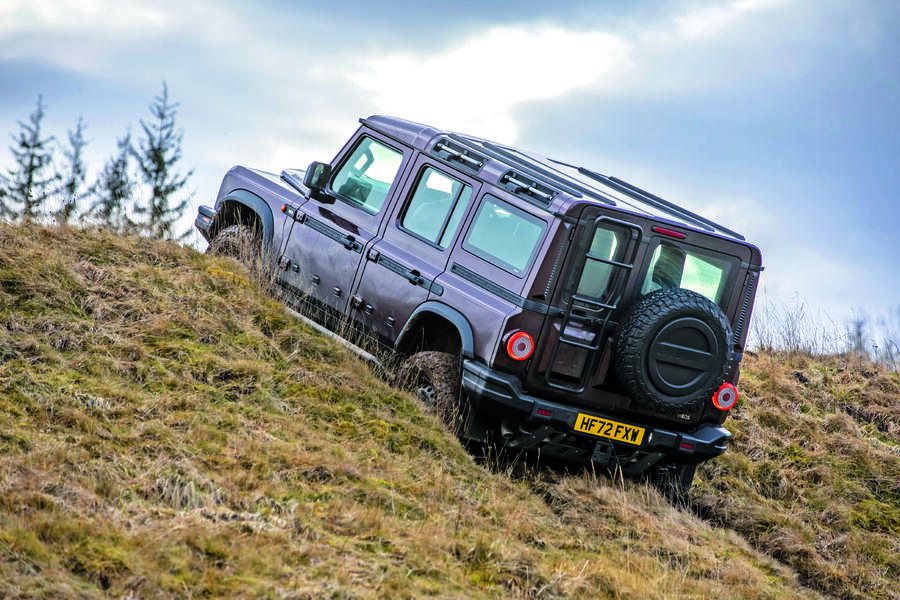
Ineos Automotive's commitment to honouring the legacy of the original Land Rover Defender is such that it has even chosen to equip the Grenadier with technological solutions that have long since been phased out of the mass-market as rivals pursue improved refinement and practicality. Most obvious among these is the steering, which eschews the now-commonplace rack and pinion set-up for a recirculating ball mechanism, which effectively comprises a large worm screw running through a shaft, with bearings in the threads to reduce slop in its responses, and reduce wear by mitigating friction.
The justification for equipping the Grenadier with such a conspicuously archaic arrangement is that it stops the wheel whipping around and breaking your thumbs if you hit a rock or rut off-road - meaning you needn't keep them on the rim of the wheel at all times, as is convention.
No doubt regular mud-pluggers will appreciate the more relaxed driving style this affords, but the resulting sense of disconnection between the helm and the front axle is almost as disconcerting in itself as the prospect of snapping a digit.
Low-speed off-roading calls for a measured, precise approach that is contingent on knowing which way the wheels are pointing at all times, and precisely where on the ground they have fallen. But what the Grenadier's steering offers in durability and dependability, it concedes in feedback and predictability, to the point that the driver – counter-intuitively, given the Grenadier's analogue remit – becomes almost entirely dependent on the steering angle readout on the central screen.
So, too, do you lose any sense of elasticity; rather than returning to centre out of a turn, the steering wheel basically stays where you put it, meaning you have to make constant adjustments to stay on track which becomes a more tiresome exploit the longer you spend off the Tarmac.
But with that said, the Grenadier indisputably stands proud as one of the most capable 4x4s on the market. Its ability to wade at up to 800mm meant we could ford murky streams that would have entirely swallowed a sports car, the impressive articulation (around 9in at the front and 12in at the rear) kept the body flat over some truly fearsome undulations, and its ultra-short overhangs and 26.2deg breakover angle meant there was no risk of grounding out on the steepest and sharpest peaks.
Still, the Grenadier can’t quite match the new Defender. Air springs give that car 290mm of clearance (versus 264mm for the Ineos) and 900mm of wading depth (versus 800mm). A little better dexterity, too, and the Ineos's old-school chassis simply can't match the Gaydon car for refinement and comfort - any more than a cautious crawl over rough surfaces will have its occupants bouncing around the cabin.




